| Home | | | Blog | | | Guestbook | | | Contact |
Blog

We now headed north to L'Anse aux Meadows, the site of a 1000 year old Viking settlement. Along the way we saw many typical Newfoundland north coast things such as roadside gardens. Newfoundland is pretty rocky without much soil for growing crops. When the roads were made, in the 1950s, dirt was scraped to the sides, so those areas had deeper soil. The people use these areas to grow their vegetables. You see lots of them, mostly far away from where anyone seems to live. Plots are tended by families, generation to generation.
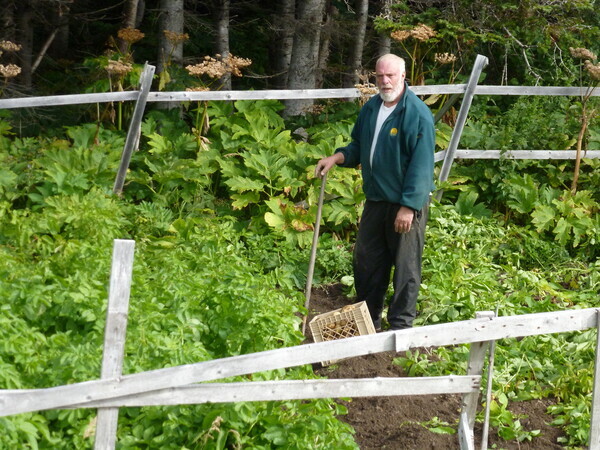
This guy had one of the best looking roadside gardens. We noticed him digging up his potatoes and we stopped to talk. He said this was his parents garden that they started after the road went in. While we chatted a car slowed down on the street to make sure everything was ok. He assured them it was and they went on. Another car came down the street and zoomed on by. After a minute or so we noticed that the second car that had passed was coming back down the road in reverse!!!! He too wanted to make sure that everything was ok. In Newfoundland seems that everyone helps each other all the time. It just felt so safe.
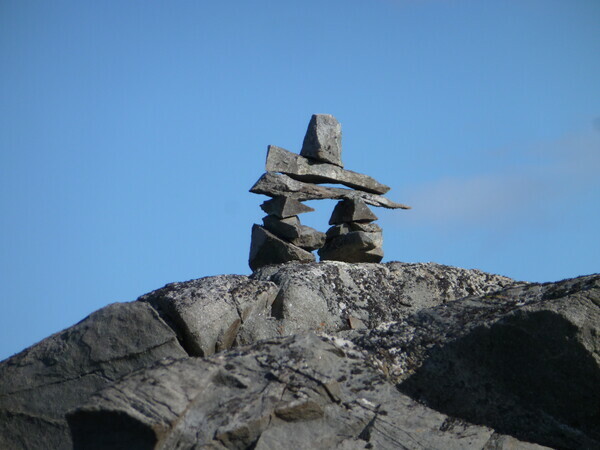
...cairns, or inuksuk, which are man-made landmarks for navigation. They were once prevalent along the Labrador coast. This is one of several we saw.
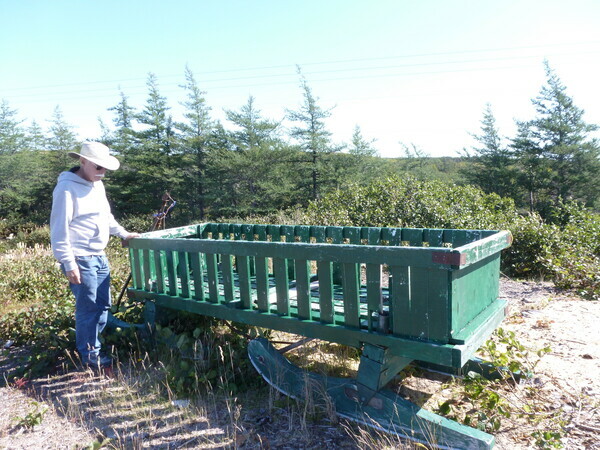
... a komatik. They are used for hauling firewood and other things in the snow. They are usually close to piles of firewood along the road. Families would cut firewood and leave it on the side of the road to season before taking it home. No one would take another family's firewood.
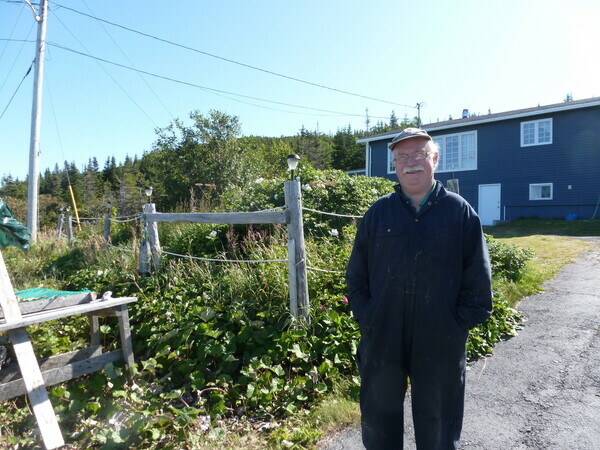
This is my pal Duncan. We were just driving along toward the Viking settlement when I saw a green plastic bag flapping in the wind. It caught our attention so we stopped to see what it was. Duncan was painting his garage door and came over.
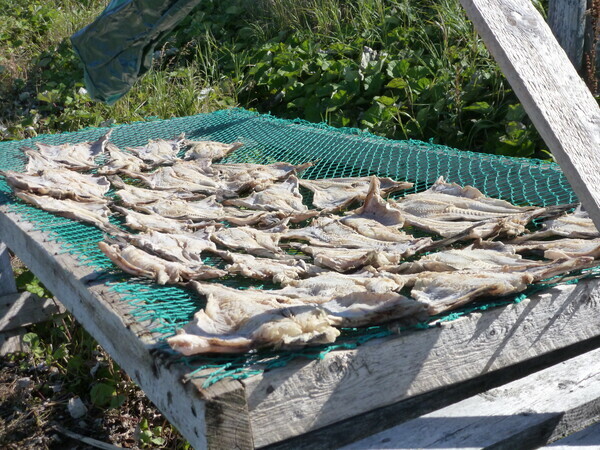
Duncan had salted his cod like his ancestors had done and was drying it out in the front yard. He used the plastic bag blowing in the wind to keep the flies off.
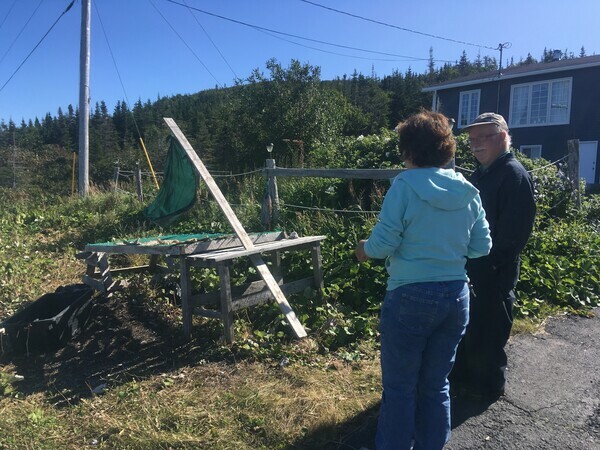
He,like all of the Newfoundlanders we met loved having new people to talk to. Newfoundlanders are noted all over Canada as being the friendliest of people. We have to agree we have never been with a more pleasant, compassionate, helpful, and warm group of people. There is no stranger danger. It felt so wonderful.
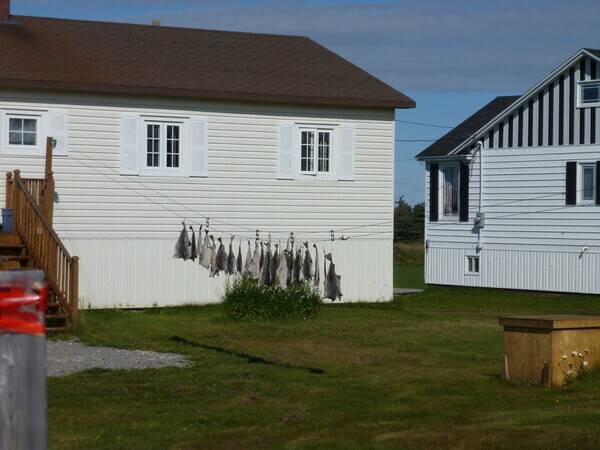
This family just pinned their cod to the clothes line! We can only imagine what the clothes smelled like!!! Such ingenuity!!
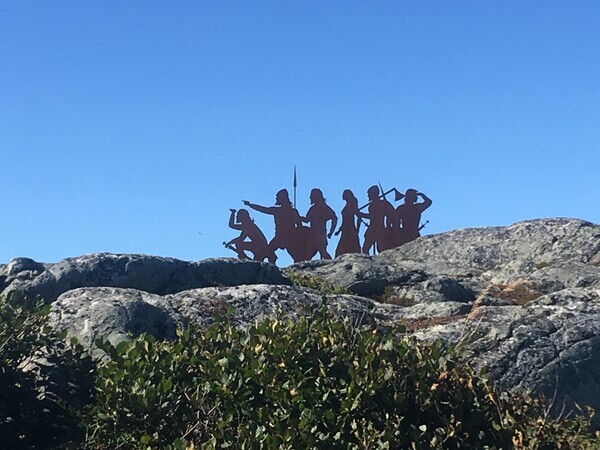
Then, in the distance, we saw this, the entrance to L'Anse aux Meadows.

These are the remainents of the original settlement foundations. Close by is a reconstructed village.

The buildings were made of sod and wood. In addition to exploring these new lands, the Vikings returned home with wood, fish, and crops not available in Greenland. They came and went over a period of about 30 years.
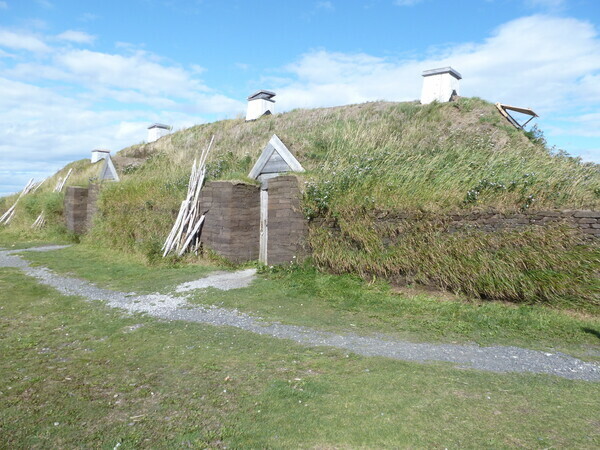
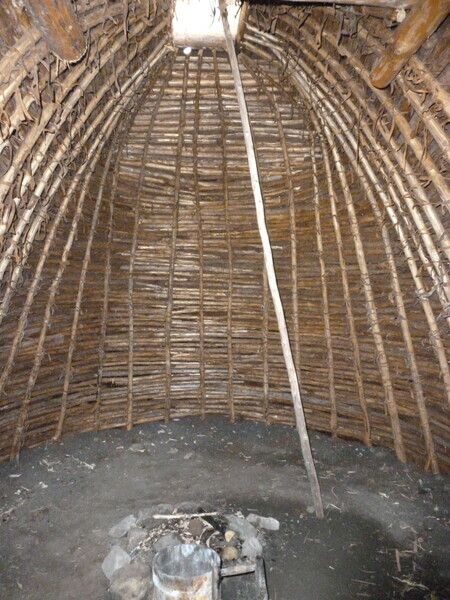
This is the inside of the slave's quarters.
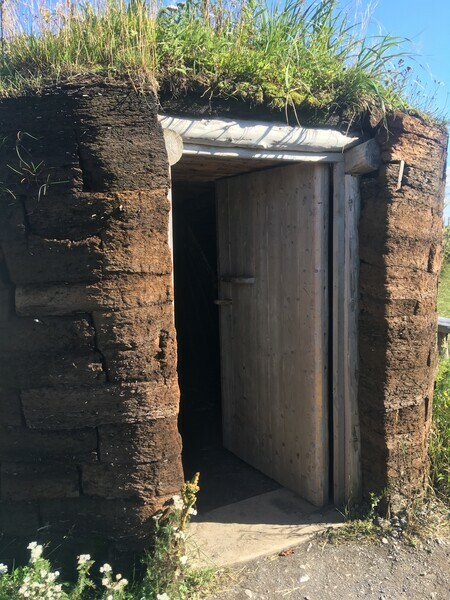
You can see the layers of sod, which probably insulated well.

Inside were people reenacting how they must have lived. The long house was furnished and embellished in typical Viking style, based on what was discovered on the site.
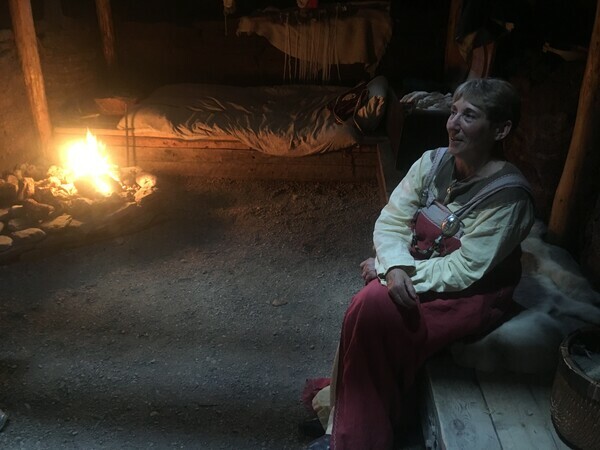
This woman was weaving when we were there.
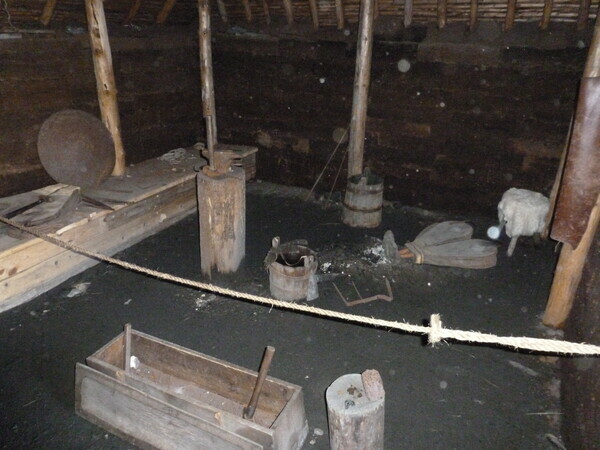
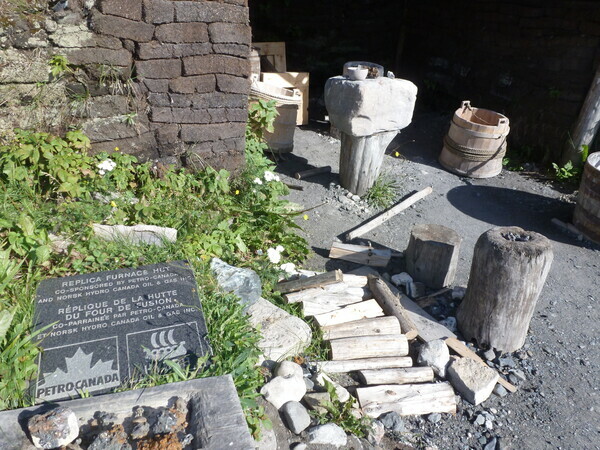
These two photos show the blacksmith furnace area. The Vikings knew how to make steel. One reason they chose this particular spot was because the water was a dark rust color, indicating an iron-rich area.

They do look like they belong.

We don't look much like Vikings!
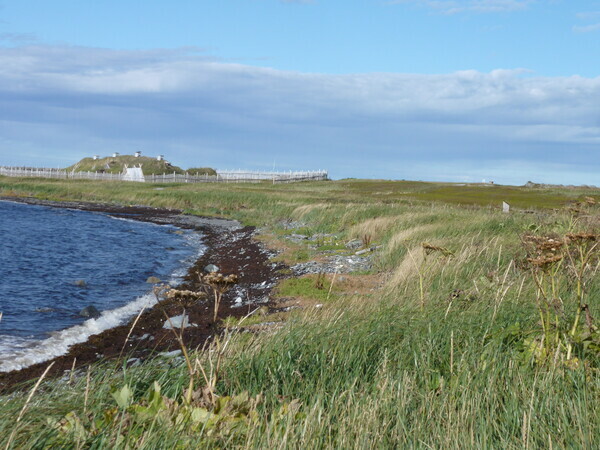
After the ruins there is a mile long sea cliff trail that goes along the shoreline on to the cliffs and across a bog. You get a good idea of the surrounding area.
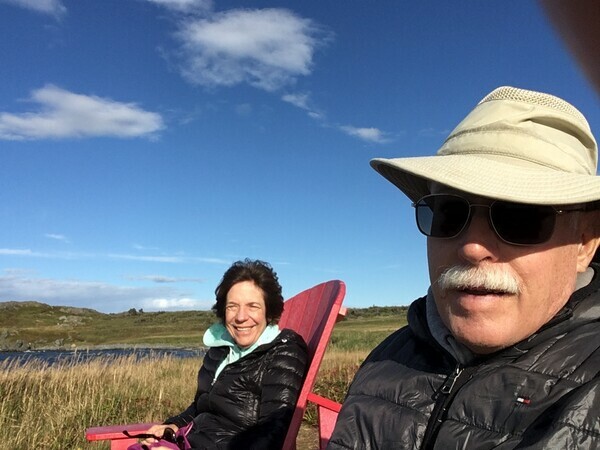
On one hill we found these chairs set up for a mid-trail rest. We couldn't pass them up!!
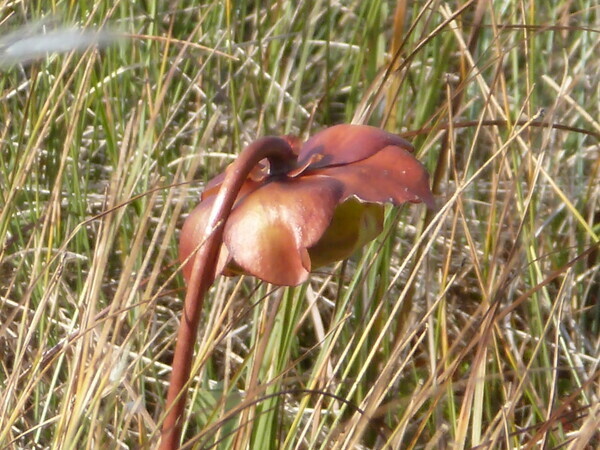
In the boggy area we saw this insect-eating plant. This pitcher plant is the floral emblem of the province of Newfoundland and Labrador.